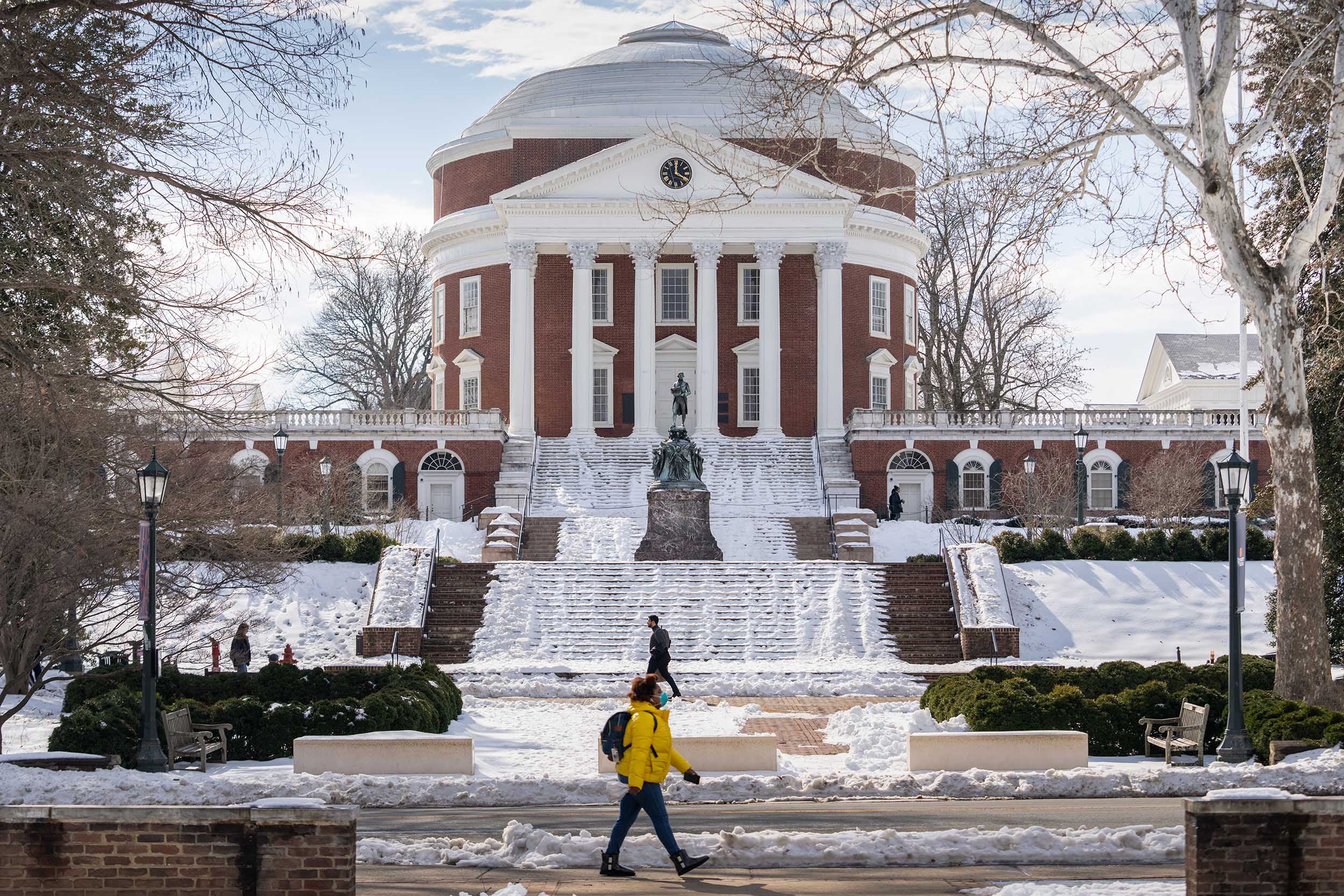A new study from Georgetown University’s Center on Education and the Workforce places the University of Virginia fifth among public colleges – and the highest-ranking flagship university – with the highest 40-year return on investment for low-income students.
The study’s weighted score took into account three things: the graduation rate of Pell Grant recipients, the percentage of students who received the grants, and the percentile rank of 40-year earnings of Pell Grant recipients.
Here are the top 10 public schools in the new ranking and 40-year earnings.
- Maine Maritime Academy: $2.2 million
- Colorado School of Mines: $2.1 million
- California State University Maritime Academy: $1.9 million
- Georgia Institute of Technology: $1.9 million
- University of Virginia: $1.8 million
- SUNY Maritime College: $1.8 million
- College of William & Mary: $1.7 million
- University of California-Berkeley: $1.7 million
- University of Michigan-Ann Arbor: $1.7 million
- University of California-Los Angeles: $1.6 million
The study, “Colleges Where Low-Income Students Get the Highest ROI,” was released earlier this week and ranked 3,380 institutions overall. Its results state that low-income students “get the best financial returns from attending public institutions, where costs are generally lower,” according to Georgetown’s press release.
Georgetown’s Center on Education and the Workforce says low-income students who come from families that earn $30,000 or less annually make up more than one-third of college students. The researchers found that low-income students who earned bachelor’s degrees at public schools generally fare best, with average 40-year earnings of $951,000. Low-income students at private, nonprofit institutions come in second with average 40-year earnings of $863,000, followed by for-profit colleges, where those students’ average 40-year earnings are $763,000. The calculations are a student’s earnings over time, after subtracting the cost of attending an institution of higher learning.
The report noted that overall, low-income students do not fare as well as their college peers.
“Low-income students have a lower return on investment than all students across public and private institutions and certificates, associate’s degrees, and bachelor’s degrees, largely because they tend to earn less as adults,” read the press release.
In its 2021 ranking, U.S. News and World Report noted the six-year graduation rate of students who received Pell Grants at UVA was 90%.
At his inauguration in 2018, UVA President Jim Ryan said that one of his missions at UVA was to “[open] wide the door to opportunity for first-generation, low- and middle-income students.”
AccessUVA, UVA’s financial aid program, guarantees to meet 100% of the demonstrated financial need of students admitted. UVA operates with a “need-blind” admission policy that bolsters efforts to attract the best students and achieve socio-economic diversity in the student population.
At UVA, in-state students from families earning less than $80,000 annually receive free tuition and fees, while tuition, fees, room and board are completely covered for in-state students with family incomes of less than $30,000.
Media Contact
Article Information
January 27, 2022
/content/uva-ranked-no-5-public-school-return-investment-low-income-students

